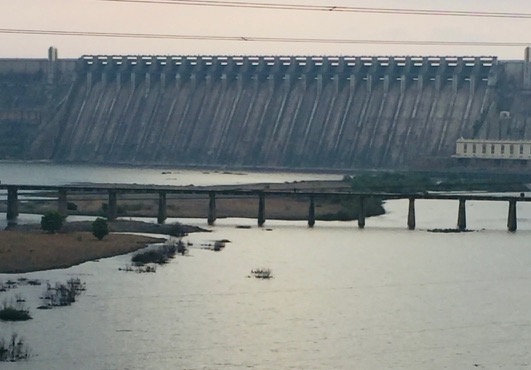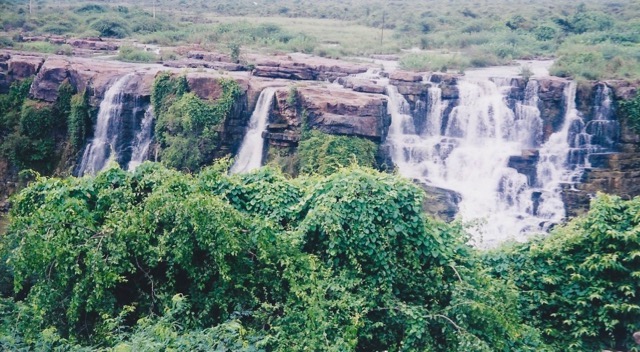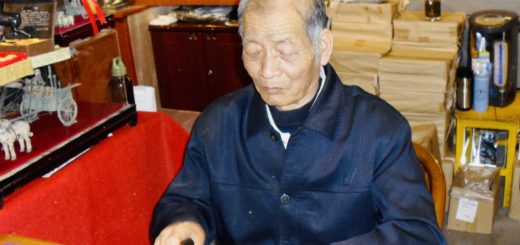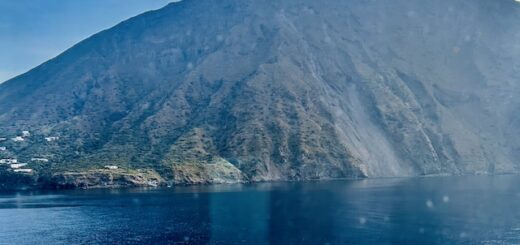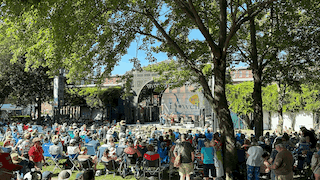Nagarjunasagar
NAGARJUANASAGAR: Weekend Getaway from the City
Nagarjunasagar is a man-made lake 149 km southeast of Hyderabad city. When visiting Hyderabad, Nagarjunasagar is our destination for a quiet weekend or short visit to get away from the city. It is a 3½ hour drive through Ibrahimpatnam. It is a very peaceful and serene spot for relaxing for a couple of days. The lake and the dam are named after a Buddhist philosopher of second century A.D.
On one of our visits, we arrived in Nagarjunasagar at 2 pm. Luckily got accommodation in one of the best resort known as vijay vijar located at a beautiful location. It is a huge, beautifully built building which sits on a high hill side. There are large suites which were originally built for government officials during the construction period. Apparently, even now most of the rooms are usually occupied by visitors on official capacity. Grounds of the resort are planned with great care. Well maintained lawns are lined with low hedges which are beautiful. And a wide variety of plants and shrubs are scattered around which are aesthetically very pleasing. The resort looks out on to the dam.
We had our lunch at the resort restaurant where service and food was mediocre. When we went on a drive, we realized that the entire structure is not only magnificent, but incredible to believe that the ingenuity of man and the hard labor and skill that went into achieving this miraculous result. We went around from the upper road to the lower road which was necessary to see all the earth dams.There is also a broken bridge which was built to divert traffic but it broke down. There are small villages called Vijaypuri south and Vijaypuri north. Vijaypuri north is bigger with lot more stores to supply various merchandise to the local community.
We wanted to go to Nagarjuna Konda which we thought was a town nearby, but were told that it is an island which can only be reached by a boat. Apparently, it is an area where an archeological dig revealed an ancient town. Further inquiry into how to get there, revealed that at 8: am a staff boat will take us there. Therefore, we planned our visit for the next day. In the morning we ordered a lunch to be packed for us to take with us on the trip. They did that while we got ready and had breakfast. Everything went according to plan and we left to go on the boat at 8: am. On arrival at the docks we were told that the trip was cancelled because of strong winds with a promise that we could still go by the afternoon boat at 1:30 pm, if the winds die down. Now we had 4 hours to spare. Tourist information sighted some options for us during the waiting time in the area. One of the options were Ethipothala falls, 70 feet river cascade on the Chandravanka river, which is a tributary of Krishna. These falls are made with a combination of river and mountain water and are active throughout the year. During heavy rains they are huge and thunderous but their size and force subsides during dry season.
We went all the way up tracking the flow of water until someone came to warn us about the alligators in the area. We walked back to the guest house which sits atop a hill and across from it is seen a gorge and river Krishna flows with full fury down in the valley. There are caves around the area where there are lot of temples. These caves run several miles where maharishis live. We spent some time enjoying the beautiful surroundings before we got back hoping to get the boat. We ate our lunch which we brought with us. We also bought dosas with raw onion chopped. It was a good lunch. After all that, as we suspected, the boat trip was cancelled again because the winds were high.
It was only 1:15 pm, so we decided to go to Anapu, a tiny place tucked between the mountains and open on one side of Nagarjuna Sagar. There they have reconstituted a whole village with ruins, stadium, and a monastery.
During the construction of Nagarjunasagar Dam archealogists dug up a Bhddhist site which was going to be flooded by the lake waters. They decided to move it brick by brick to a location in Anapu. Now it is a full-fledged tourist site. There is no charge for visiting. It is neither commercialized nor signposted. To find it one has to ask around. We took one little boy from a surrounding village to show us where it was.
Then we headed to view point where we got information about the dam and got a good look at the dam from a higher point. While there we were asked to visit the Power plant which supplies electricity for a large part of the State.
And 8 huge turbines operate to send three phases of electric current through transformers and to huge cables which take it to incredible distances to make life easy for everyone. These turbines were designed by Japanese who also manufactured and exported them. Each one of these weigh 61,400 Kg. An incredible amount of water is pumped into it to turn those monstrous turbines. Apparently they go full circle 158 times per minute making immense amount of electric charge. The building itself is a technological wonder and a monument to efficiency.
Through our travel in India we see great accomplishments, amazing feats in construction and engineering, miraculous archeological discoveries and management and preservation of all that is found. All made possible with combined effort of rich and poor; educated and uneducated, and yet there is such a significant problem of poverty, and human suffering which has not been conquered even to a level of some satisfaction, which is a constant thorn under my skin. Then again dualities seem to exist quite comfortably in India.


